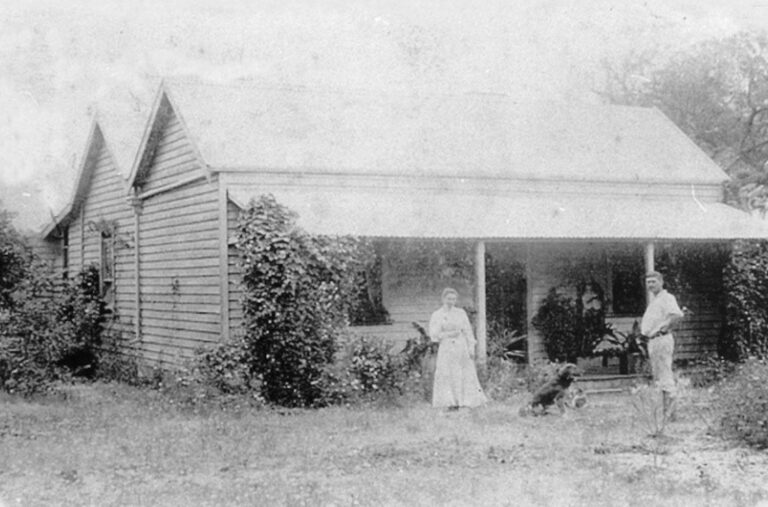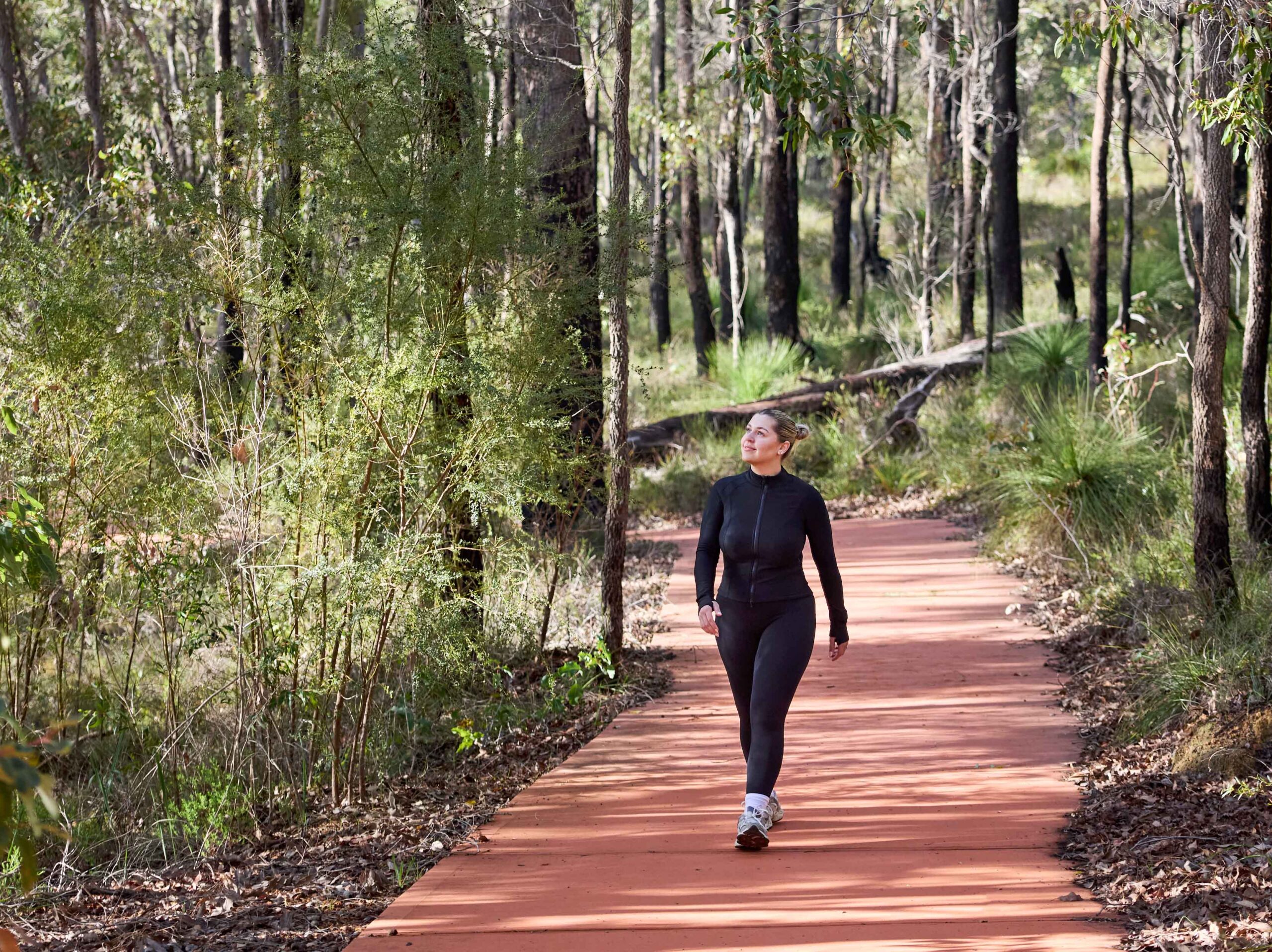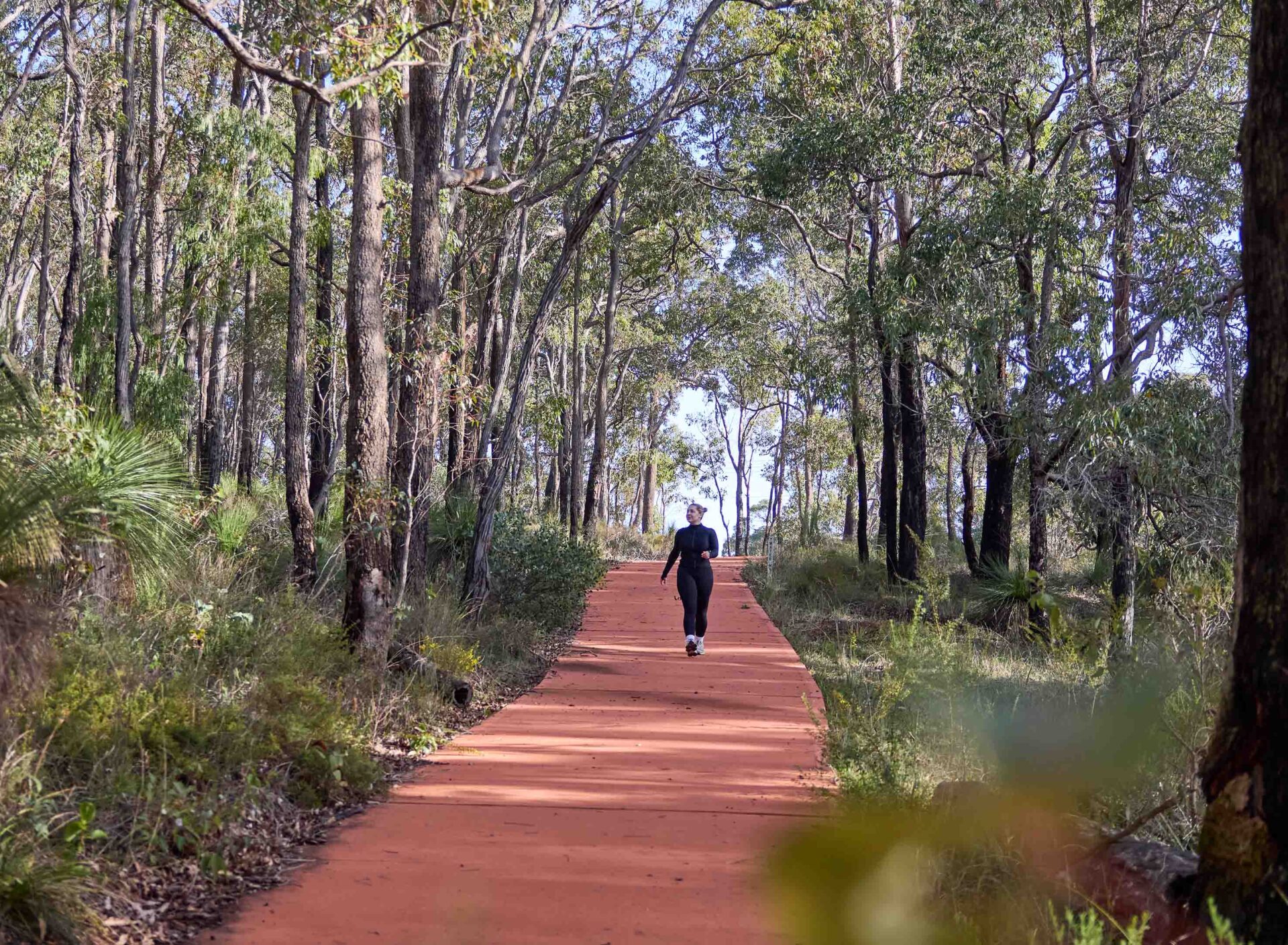The Harvey Hike Trail (also known as the Weir Walk) is a self-guided walking trail that celebrates the famous Harvey Hikes of the 1930s.
The 4km one-way or 8km return trail connects ten historical markers along a journey from the Harvey Railway Station Precinct to the Harvey Dam.
Follow the path and learn about the rich history of Harvey along the way.
Download the Harvey Heritage Trails map here.

Follow the Footsteps of History
During the difficult Great Depression years, reduced train fares combined with country hike days were offered by the Rail Department to increase passenger use of WA trains.
When Harvey was chosen for the Hike, passengers walked from the Harvey Railway Station for 2.5 miles to the Little Weir for a picnic lunch and after lunch continued their hike to Harvey Weir (Harvey Dam). The Hikes usually coincided with the two weirs overflowing in springtime.
The Harvey Hike in 1933 saw 3,228 people arrive in Harvey by five trains from Perth, Bunbury and Collie.


1. Harvey Railway Station Precinct and Museum
The Harvey Railway Station has been the central point of activity for the district since 1893.

2. Harvey Hotel
In 1898, Alexander Thomas Smith opened Harvey’s first hotel, which was built behind the site of the present hotel currently known as the Harvey Hotel.

3. Kilrea or Sutton House 1913
Sutton House is located on land originally purchased by Robert Tennant Stowe Wolfe of the Wolfe Creek Meteorite fame. In 1913, William and Florence Sutton (nee Logue) of Jardup Farm constructed the Federation cottage as their town house.

4. Harvey River Diversion Drain
The Harvey River Diversion Drain (also known as the Harvey Myalup Diversion Drain) was one of the largest infrastructure projects the Australian Government delivered in the early 1900s. The feat of the Diversion Drain is also celebrated with a range of public art.

5. Meriden Park 1898
Meriden Park was originally a dairy established by Major Henry Palmer and his wife Grace (nee Clifton). While serving in World War 1, the Sultan of Egypt awarded Palmer with the Order of the Nile.

6. Fairlawn House Historic Site 1890
Fairlawn was built by John Knowles, the owner of Harvey’s first store. Before the railway, Fairlawn was the centre of Harvey. The house was later called Meriden Park.

7. Mr Moss’ Garage at Highway Corner
A service station has stood on this site for nearly 100 years. Mr Cecil Moss opened the first garage in 1928.

8. Elliott’s Timber Mill Historic Site 1939
From 1939 to 1958, J.T. Elliott operated a timber mill to cut building timber and fruit case material for the local orange growers to make the fruit boxes. Note: image not Elliott’s Mill.

9. Adam’s House – Old Staging Post & First Post Office Historic Site 1883
An old slab cottage with a shingle roof on South Western Highway, which belonged to the Adam’s family, was the Harvey River Settlement’s first staging post and post office

10. Forestry Irrigation Channel
Down Penny Lane are the remnants of the ‘Forestry Channel’, which formed a part of the revolutionary Harvey Irrigation System. The channel was also a great place for local Forestry Cottage children to swim.

11. Harvey Forestry Cottages Historic Site
For about 50 years, a thriving community of Forestry Department cottages stood at this location. Local forestry fire fighting teams and their families occupied them.

12. Harveston Park Homestead Historic Site
Built in 1884, Harveston once stood at the end of Hillside Road and was the first home of George and Ellen Gibbs. It was built by George’s brother Herbert, the father of famous author May Gibbs.

13. Original Site of Governor Stirling’s Homestead c1837
At the end of Homestead Road, by the tranquil banks Harvey River, lies the original site of Sir James Stirling’s Homestead, which was often referred to as the Hunting Lodge.

14. Korijekup Conservation Park
Korijekup Conservation Park is the largest and most diverse Darling Range foothills reserves south of Perth. The Bindjareb call Harvey, Korijekup or Coregica; meaning the place of the Red-Tailed Black Cockatoo.

15. Billy Goat Hill
Climb Billy Goat Hill for a beautiful view of the Harvey hinterland and Harvey Dam. Steeped in nostalgia; local children would get enormous speed on their bikes as they rode to Gibbs Pool for a swim.

16. Gibbs Creek
Gibbs Creek was named after pioneer settlers, brothers Herbert and George Gibbs, and their families. Herbert’s daughter, the famous author Cecilia ‘May’ Gibbs, lived nearby between the ages of 7 and 10 years.

17. Gibbs Pool
Historically known as the Little Weir or the Intercepting Weir, Gibbs Pool was used as Harvey’s swimming pool for about five decades after the main Harvey Weir was designated as Harvey’s main drinking water source.

18. Harvey Dam
In 1914, the building of the Big Weir commenced. It was officially opened by the then Governor, Sir Henry Barron, on June 21st 1916. They raised the Weir wall in the early 1930s to increase the water storage capacity.


























